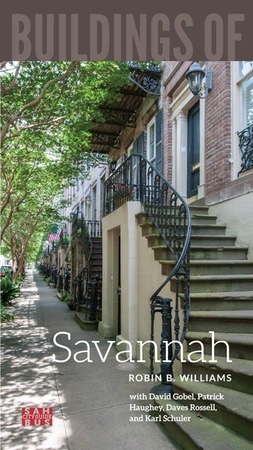
Congregation Mickve Israel is the third-oldest Jewish congregation in America, tracing its origins to forty-two Sephardic and Ashkenazi Jews who sought asylum in the Georgia colony in 1733. The congregation had no permanent building until 1818, when it constructed the first synagogue in the state, at the corner of Perry Lane and Whitaker Street. Plans were begun by 1874 to build a new synagogue on the present site, a task for which Harrison, an English immigrant architect working in New York City, was hired. Consecrated in 1878, Harrison’s Gothic Revival synagogue took inspiration from the similarly styled First Presbyterian Church that stood on the neighboring trust lot to the north until 1941, following the custom of Reform Judaism congregations emulating Christian models. Its T-shaped basilican form with a nonstructural rib-vaulted ceiling, clustered piers, and stained glass lancet windows give the synagogue a remarkably churchlike appearance. Only the small Star of David atop the entrance gable and the Byzantine-influenced octagonal belfry with a copper dome that crowns the massive square front tower suggest the building’s true function. In 1956 a modernist brick building, Mordecai Sheftall Memorial Hall, was completed behind the sanctuary, only to be replaced in 2003 by the present Sheftall Building (Levin/Brown and Associates), the design of which attempts to harmonize with the synagogue.

